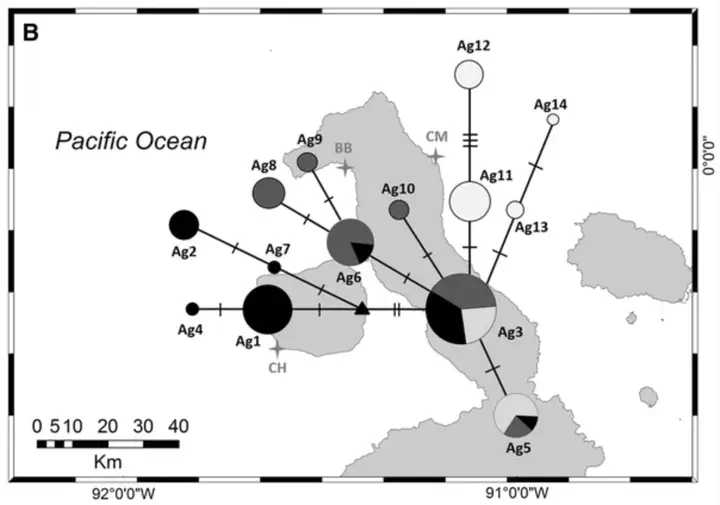Fine-scale matrilineal population structure in the Galapagos fur seal and its implications for conservation management
 Image credit: Lopes et al. (2015)
Image credit: Lopes et al. (2015)Abstract
Females of many pinniped species generally exhibit strong fine-scale philopatry, but it is unclear over what spatial scale this behavior may translate into genetic population structure. We conducted a population genetic survey in the Galapagos fur seal, Arctocephalus galapagoensis, an endangered pinniped endemic to a small geographic range in the northwest of the Galapagos archipelago. To assess patterns of genetic diversity levels and population differentiation, we analyzed part of the mitochondrial control region (mtDNA) and 18 microsatellites DNA markers. We detected similar levels of genetic diversity to many other pinniped species (h = 0.86, π = 0.012, A = 7.44) despite severe anthropogenic exploitation in the nineteenth century and recurrent population crashes due to recent climatic perturbations associated with El Niño Southern Oscillation events. We further found remarkably strong fine-scale matrilineal population structure, with 33.9 % of the mtDNA variation being partitioned among colonies separated by as little as 70 km swimming distance. In contrast, population structure inferred from nuclear markers was weak. Our findings provide further evidence that natal philopatry can translate into fine-scale genetic population structure in highly mobile species. We discuss the relevance of our results for the fine-scale conservation management of this species with a very restricted geographic range.